
|
CIEA Environmental Chronicle
Monthly news of environmental issues affecting Indigenous Peoples
|
|
|
|
Vol. 55, Issue 1, February 2024
|
|
1. Opening Remarks- Happy Black History Month |
|
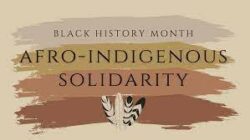 |
CIEA would like to pay our respects and honor our Afro-Indigenous and Black Native relatives. We draw on the words of our relative Kyle T. Mays (Saginaw Chippewa). “solidarity is not inevitable; it requires intensive labor, intentional compassion, and love. We will disagree, but we must work from a position of kindness and patience. We might get upset with one another, we might call each other out, but it should be done through love, and with the larger intention of ending the structural forces of antiblackness and settler colonialism. This work requires patience.” We must do our part within the larger conversation and demand accountability as well as change. CIEA would like to take the time to offer space for our Afro-Indigenous and Black Native relatives. We stand in true solidarity with our Afro-Indigenous and Black Native relatives and communities. We are committed to anti-racist work. CIEA would like to use our platform to denounce anti-blackness and colorism that our own Indigenous nations and communities have been complicit in. To our Afro-Indigenous and Black Native relatives and community members, CIEA recognizes, honors, and celebrates you. Again, we are so happy to be able to provide you with monthly announcements about training, capacity building, Tribal Self-Advocacy and funding opportunities, as well as water related news. Readers are more than welcome to send information about upcoming events, training, or news that you think would be beneficial for other Tribal members in other regions to know to [log in to unmask] |
|
|
|
2. Training Opportunity- RCAC February Training Calendar |
|
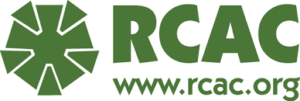 |
1. NAWMA Northern California
Hopland CA 02/06/2024
8:00 AM
Register here: https://www.events.rcac.org/assnfe/ev.asp?ID=4073
2. NAWMA Northern California
Hopland CA 02/07/2024
8:00 AM
Register here: https://www.events.rcac.org/assnfe/ev.asp?ID=4074
3. Southern California NAWMA
Pauma Valley CA 02/07/2024
9:00 AM
Register here: https://www.events.rcac.org/assnfe/ev.asp?ID=4102
4. Distribution 1 & 2 Expected Range of Knowledge Exam Prep
Needles CA 02/13/2024
8:30 AM
Register here: https://www.events.rcac.org/assnfe/ev.asp?ID=4037
5. Do the Math: Operator Certification Exam Preparation
Needles CA 02/14/2024
8:30 AM
Register here: https://www.events.rcac.org/assnfe/ev.asp?ID=4038
6. Revised Total Coliform Rule (California)
Online CA 02/27/2024
10:00 AM
Register here: https://www.events.rcac.org/assnfe/ev.asp?ID=4043
7. Revised Total Coliform Rule (California)
Online CA 02/27/2024
2:00 PM
Register here: https://www.events.rcac.org/assnfe/ev.asp?ID=4044
8. Central California NAWMA Quarter
CA 02/28/2024
9:00 AM
Register here: https://www.events.rcac.org/assnfe/ev.asp?ID=4108
|
|
|
|
3. White Paper Announcement- California Water Commission presents statewide strategies for protecting communities, fish and wildlife during drought |
|
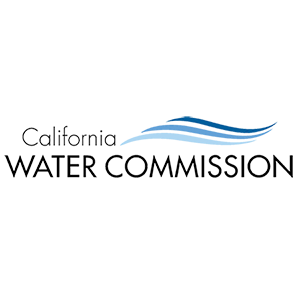 |
The California Water Commission today approved a white paper that contains potential strategies to protect communities and fish and wildlife in the event of drought. The white paper is in support of Water Resilience Portfolio Action 26.3, and will be shared with the Secretaries for Natural Resources, Environmental Protection, and Food and Agriculture, who requested the Commission’s engagement on this topic.
California is a drought-prone state. Climate change exacerbates drought conditions in California by creating hotter and drier baseline conditions, leading to more intense droughts. Additionally, climate change is creating the conditions for “weather whiplash” – a phenomenon California experienced in the 2022-2023 water year, swinging rapidly from severe drought to record-breaking precipitation events and flooding. To ensure California’s people and environment have sufficient water during times of drought, the State will need to adapt to this new normal of ongoing weather extremes.
“California has experienced two of the worst droughts in our state’s history in the last decade alone,” said Natural Resources Secretary Wade Crowfoot. “While we’ve invested billions across the state to become more drought resilient in light of this new reality, there’s more we need to do to prepare for the next drought, whenever it comes. These thoughtful recommendations by the Water Commission point the way forward and I’m eager to explore how these ideas can be applied in coming years.”
The Commission’s work on drought is forward-looking. The strategies proposed by the Commission integrate months of conversations with State agencies, experts, Tribes, water users, interest groups, interested parties, and the public. The Commission has taken the input it received and charted a through-line, developing four key strategies for augmenting California’s communities’ and fish and wildlife species’ drought resilience.
Scale up groundwater recharge. During flood events, when all other water rights and environmental needs are met, channeling excess flows to groundwater recharge can build drought reserves. The State can help scale up groundwater recharge by planning and preparing for recharge during times of high flow, promoting recharge efforts through outreach and financial incentives, efficiently permitting recharge projects, supporting the infrastructure needed to conduct recharge, and continuing to apply lessons learned.
Conduct watershed-level planning to reduce drought impacts to ecosystems. To enable fish and wildlife to be more resilient to drought, the State must support fish and wildlife during drought and work to recover ecosystem function during non-drought periods, supporting viable populations that can weather the next drought period. The State can help reduce drought impacts to fish and wildlife by improving water availability for species, advancing habitat restoration and conservation projects, integrating forest management into drought planning, and creating a plan to protect species during drought emergencies.
Better position communities to prepare for and respond to drought emergencies. During drought, communities need resources to ensure that vulnerable community members are safe in times of crisis. In advance of drought, they need support to help abate future vulnerabilities to water scarcity by improving water systems and integrating water use into land use planning. The State can help communities prepare for and respond to drought by offering climate disaster funding, ramping up efforts to improve water system resilience and regional water solutions, and supporting integrated land and water planning.
Support improved coordination, information, and communication in drought and non-drought years. In California, droughts need to be dealt with as a chronic phenomenon and not an occasional emergency. The State needs to continue to align its staff capacity, improve its data collection, and contextualize its drought communication, moving from a crisis mindset to recognizing drought as a natural and inevitable element of the state’s hydrologic cycle.
“Groundwater recharge to replenish our aquifers is a key water strategy for a hotter, drier future,” said California Department of Food and Agriculture Secretary Karen Ross. “It provides important ecosystem benefits, protects drinking water wells, and supports climate-resilient agriculture for healthy food production and thriving rural communities.”
The strategies and actions outlined in this paper are additive to the important work already underway by State agencies. The Commission expects State decision-makers to weigh whether and when to move forward with these suggested strategies.
“Drought impacts all of California’s water users, but some – small, rural communities and fish and wildlife – are particularly vulnerable,” said Commissioner Sandra Matsumoto. “The strategies proposed by the Commission will help the State protect these vulnerable water users in the event of drought. To move forward, water sectors, users, and managers must work together to minimize the impacts of drought on all Californians.”
The final white paper can be viewed by hitting the read more button below.
|
|
|
|
|
|
4. Conference Information- Early- Bird Registration Deadline for The State of the San Francisco Estuary Conference- February 9, 2024 |
|
|
Every two years, the Estuary Partnership brings a focus to the management and ecological health of the San Francisco Bay-Delta Estuary. The State of the San Francisco Estuary Conference showcases the latest information about the region’s work to sustain and improve the estuary’s habitats, living resources, water quality, climate resilience, and environmental stewardship.
The 16th biennial State of the San Francisco Estuary Conference will be held March 12-13, 2024 in Oakland, CA at the Henry J. Kaiser Center for the Arts.
The pre-conference workshop “Environmental Justice 2.0 for the Bay-Delta Estuary: Lessons Learned from EJ Expert-Government Agency Partnerships and Models for the Future” will be held on March 11, 2024 at the Oakland Community Hub’s Community Event Space. The workshop is space-limited and tickets are first-come first-served.
Early bird registration ends February 9th
|
|
|
|
|
|
5. Training Opportunity- SWAMP Tribal Bioaccumulation Monitoring Training: Bioaccumulation monitoring study design & preparation- February 20th from 9AM-12PM |
|
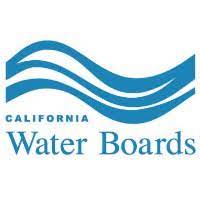 |
This training series is only open to California Tribal Environmental Departments (or equivalent Tribal programs) at this time. All courses will be held virtually over Zoom, and instruction will be recorded for posting online (Q&A will not be posted without the consent of attendees). All courses are free to attend. Each course will be less than 3 hours in length. Registration for each course will remain open until after the end of the course. Course announcements and updates will be shared via the California Water Board’s Tribal Matters and Safe to Eat Workgroup email lists. What is Bioaccumulation? The word bioaccumulation is used to describe the gradual buildup of pollutants in animals, including fish or shellfish. Bioaccumulation occurs when an animal absorbs the pollutants from their environment or through their diet. Pollutants that bioaccumulate include heavy metals like mercury, polychlorinated biphenyls (PCBs), and other chemicals. Humans are at the top of the food chain and when we eat animals that contain a lot of pollutants, we can experience several adverse health effects. Bioaccumulation monitoring can give us information about which fish and shellfish are safer to eat, so we can enjoy the cultural and health benefits of eating fish and shellfish while minimizing our exposure to pollutants. Additionally, bioaccumulation monitoring can provide data and information to help evaluate how well government programs protect and restore water quality in California. For more on bioaccumulation monitoring in California, see the SWAMP Bioaccumulation Monitoring Program fact sheet (English, Spanish, Simplified Chinese, Traditional Chinese, Hmong, Korean, Tagalog). Training Series Background The purpose of this training series is to support California Native American Tribes in developing programs in the areas of bioaccumulation monitoring, data analysis, and data use processes, and enable Tribes and other bioaccumulation monitoring groups to adopt those processes into their workflows and more easily partner with the Program and the Safe to Eat Workgroup. The partnership between the Program and the California Indian Environmental Alliance in developing this training series is critical to ensure the training materials and content are tailored to broad and diverse audiences. Each training in the series will be recorded and the pertinent components of each recording and corresponding training materials will be published on the Program’s website so anyone can access and use them in the future. If you have specific questions about the training series, please contact Anna Holder, STEW Co-chair & SWAMP Bioaccumulation Monitoring Program Coordinator at [log in to unmask] (preferred) or 916-341-5096. To register, please hit the read more button to be directed to the registration link. |
|
|
|
|
|
6. Advisory Committee Opportunity- Join the Environmental Justice Advisory Board for California’s Coast and Ocean- Due February 23, 2024 |
|
The Better World Group is partnering with the Ocean Protection Council (OPC) to develop an Environmental Justice Advisory Board to advance equitable ocean and coastal programs and policies along California’s Coast. I hope you will please consider sharing this opportunity with folks in your network who are committed to environmental justice in California’s coastal regions. The application cab be found by hitting the read more button below. Application is due Friday, February 23, 2024. There are more details about the Advisory Board and what members can expect in the application. If you have any questions, please feel free to contact the Better World Group team at [log in to unmask] |
|
|
|
|
|
7. Publishing Opportunity- Invitation to Submit a Narrative for the Status of Tribes and Climate Change (STACC) Report, Volume 2- Due February 26, 2024 |
|
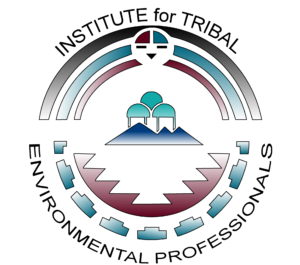 |
The Institute for Tribal Environmental Professionals’ Tribes and Climate Change Program (TCCP) is convening Volume 2 of the Status of Tribes and Climate Change (STACC) report. The STACC report continues to seek and uplift the voices of Tribes/Indigenous Peoples on the impacts of and solutions to climate change in the context of the Indigenous peoples in the United States. The first volume was published in 2021. Volume 2 is focused on Indigenous and Traditional Knowledges. A key component of the report, that distinguishes it from most other such efforts, is the inclusion of firsthand narratives at the beginning of each chapter that share experiences of responding to climate change from an Indigenous lens. We are seeking narrative contributions for the below topic areas to help elevate the impact of the report. The narratives are due on Monday, February 26, 2024. Defining Indigenous Knowledge Systems & Traditional Ecological Knowledge Preserving, Protecting, and Honoring Indigenous Knowledges Cultural Preservation and Revitalization in the Face of Climate Change Indigenous Water Justice Cultural Burning/Good Fire Young Leaders and Their Roles in Climate Action Legal Challenges and Opportunities for Indigenous-Led Conservation Indigenous-Led Conservation Economic Impacts on and Possibilities for Indigenous Communities Indigenous Ways of Not Knowing/Humility Within Indigenous Knowledge Systems We welcome submissions in the form of written pieces with a maximum of 500 words; photo submissions; and audio and video recordings ranging from 5 to 10 minutes in length which may be selected for inclusion in the report as a link and on the report website. For examples of how the written submissions might look and feel, please see Volume 1 of the STACC Report. For a general example of how audio submissions might be created, please listen to the audio recordings from Voices of Grand Canyon. You can fill out the Informed Consent Form online by hitting the read more button below. We would be honored if you would be willing to contribute a narrative. Please email your submission, the topic that it covers, and any questions to Bazile Minogiizhigaabo Panek, Indigenous Consultant, at [log in to unmask] |
|
|
|
|
|
8. Workshop Opportunity- Delta Adapts Draft Adaptation Plan Workshop - March 1, 2024 |
|
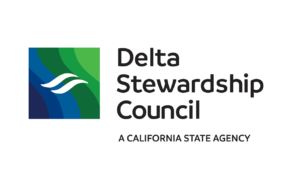 |
The Delta Stewardship Council invites you to the Delta Adapts Draft Adaptation Plan Workshop, scheduled from 9:00 AM-12:00 PM on March 1, 2024, as part of the Council Meeting at the Jean Harvie Community Center (14273 River Road, Walnut Grove, CA, 95690) and online via Zoom.
This event holds particular importance as we explore strategies for adapting to environmental changes, specifically focusing on the Sacramento-San Joaquin Delta and Suisun Marsh. They want to thank those who have been involved in past Tribal engagement and consultations, both for Delta Adapts and other initiatives, that have informed their work to date.
During this workshop, they will delve into crucial topics such as addressing the impacts of climate change, determining actionable steps, identifying responsible entities for implementation, and strategizing how to secure the necessary resources for adaptation efforts. Ensuring that considerations for Tribes are made regarding these topics is essential.
It's important to emphasize that this workshop is just one step in their engagement process. This event does not preclude direct tribal consultation, as they anticipate releasing the Draft Plan to Tribes for a 75-day consultation period. They are committed to engaging in direct consultation to ensure that the adaptation plan thoroughly considers and respects tribal perspectives, values, and heritage. The consultation requests are planned to be sent in the spring, along with the Draft Plan.
While registration is not mandatory for workshop participation, they encourage those considering attending in person to register to assist them in planning for the event. Registration link can be found below by hitting the read more button. They look forward to seeing you at the event and the discussion.
|
|
|
|
|
|
9. Funding Opportunity- NDN Collective Community Action Fund- Due October 31, 2024 |
|
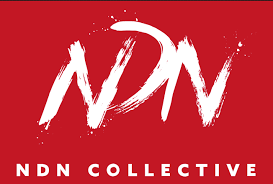 |
COMMUNITY ACTION FUND (CAF) – PURPOSE & INTENT We support frontline organizers, action and movements in their work to DEFEND. Indigenous Peoples, communities and Nations, and protect our land, air, water, and natural resources. Community Action Fund (CAF) grants support direct actions and organizing efforts that are often urgent and time sensitive. CAF prioritizes frontline, grassroots and community-based efforts that defend Indigenous peoples rights, communities and nations, including responses to climate disasters. Grant Amount: The average grant award is $15,000 but can range up to $40,000. Grant Term: Grant terms are a maximum of six months. WHAT DOES SUPPORT LOOK LIKE CAF supports community organizing and movement building work designed to shift the political and financial systems that negatively impact our communities. This may include direct action and climate disaster response efforts, comprehensive organizing work; frontline and camp infrastructure, and community-based response to climate disasters such as flooding, fires, earthquakes. Direct expenses may include funding for travel, climate response items, supplies, equipment, consultants, contractual services and staff that support various forms of NVDA (non-violent direct action), i.e., marches, camps, boycotts, prayer vigils and walks that are part of an action, organizing or protest to affect change. Action may also include community-based response to climate events such as flooding, fires and earthquakes. THE COMMUNITY ACTION FUND DOES NOT SUPPORT: Ongoing planned projects/activities/service delivery programs Annual operating costs Bridge/gap funding Scholarships Capital projects or land purchase Events Sponsorships Beyond the direct grants, Community Action grantees may receive support and amplification from the NDN Collective platform to get the word out about campaigns. Grantees are encouraged (but not required) to leverage the grant as a match to secure additional supporters and funding for their causes. HOW TO APPLY FOR THE COMMUNITY ACTION FUND Grant Applications can be submitted by clicking the read more below. Note: In order to receive an NDN Foundation grant, you or your group/organization must have a Tax Identification Number. You can apply as a non-profit organization, as an individual, a Tribe/First Nation, or as a business. The tax identification of the organization or individual becomes responsible for accountability of the grant and/or taxable income if applicable, and must be submitted with the application. Don’t have a Tax ID Number? Please reach out to [log in to unmask] if you would like to receive more information about alternative tax options. For more grants information contact: English and French speaking applicants: Thomas Kenote, Program Officer, at [log in to unmask]Spanish speaking applicants: Helen Aldana, Program Officer, at [log in to unmask] Fluxx Portal Technical Support: [log in to unmask] All other general grant inquiries: [log in to unmask]ELIGIBILITY NDN’s geographic grantmaking focus is Turtle Island (North America) and related Island Nations, including the United States, Mexico, Canada, Borikén/Puerto Rico and the U.S. “Territories”: American Samoa, Guam, the Northern Mariana Islands and the U.S. Virgin Islands. Grantmaking may be provided to the following recipients: Indigenous-led non-profit organizations within the U.S. U.S. based Tribes, tribal non-profit entities or tribal programs, Alaska Native Villages or their non-profit entities First Nations or Inuit and Metis communities, groups and organizations based in Canada Indigenous communities, groups and organizations based in Mexico Individual Indigenous people leading direct action or movement building work. |
|
|
|
|
|
10. Funding Opportunity- U.S. EPA's Environment and Climate Justice Community Change Grants- Due November 21, 2024 |
|
|
EPA’s new Environmental and Climate Justice Community Change Grants program (Community Change Grants) has announced a Notice of Funding Opportunity (NOFO) for approximately $2 billion dollars in Inflation Reduction Act (IRA) funds in environmental and climate justice activities to benefit disadvantaged communities through projects that reduce pollution, increase community climate resilience, and build community capacity to address environmental and climate justice challenges. These place-based investments will be focused on community-driven initiatives to be responsive to community and stakeholder input. They are designed to deliver on the transformative potential of the IRA for communities most adversely and disproportionately impacted by climate change, legacy pollution, and historical disinvestments.
For more information, please hit the read more button below to be redirected to the EPA's website.
|
|
|
|
|
|
|
|
If you would like us to share any events or news related to our mission, please do not hesitate to send the information to [log in to unmask] |
|